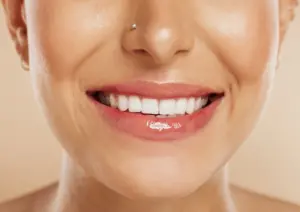Dental Sealants: What They Are and How They Work
Dental sealants are a simple and effective way to protect teeth from decay, but many people don’t know what they are or how they work. Today, we will explore dental sealants – what they’re made of, how they’re applied, and why they’re important for dental health. Whether you’re a parent considering sealants for your child or an adult looking to improve your dental care, you’ll learn about their benefits, including cavity prevention and protection for sensitive teeth. By the end, you’ll understand why you might want to consider dental sealants for maintaining a healthy smile.
What Are Dental Sealants?
Dental sealants are thin, protective coatings applied to the chewing surfaces of the back teeth, specifically the molars and premolars, to prevent tooth decay. They are made from materials such as resin-based or glass ionomer sealants, which form a hard shield over the tooth’s surface. The concept of dental sealants dates to the 1960s when they were first introduced as a preventive measure against cavities. Over the years, advancements in technology have improved the effectiveness and durability of sealants. Modern dental sealants are more resistant to wear and offer better protection, making them a useful tool in preventive dental care.
How Dental Sealants Work
Applying dental sealants is a straightforward process designed to create a protective barrier on the teeth. First, the tooth surface is thoroughly cleaned to remove any plaque or food particles. Once clean, the tooth is dried, and an acidic gel is applied to roughen the surface, ensuring the sealant will adhere properly. After rinsing off the gel and drying the tooth again, the sealant material is carefully painted onto the tooth’s grooves and pits. A special curing light is then used to harden the sealant, forming a durable shield. This protective layer effectively blocks food particles and bacteria from entering the tiny crevices on the chewing surfaces of the teeth, preventing tooth decay and cavities.
Benefits of Dental Sealants
Dental sealants offer numerous benefits, particularly in preventing tooth decay. They are highly effective in reducing cavities, especially in children and adolescents, who are more prone to tooth decay due to the challenges of maintaining good oral hygiene. Various studies and statistics support the efficacy of sealants, showing a significant decrease in the incidence of cavities among those who have them applied. In the long term, dental sealants contribute to overall dental health and hygiene by providing a protective barrier against harmful bacteria and food particles.
Sealants for Sensitive Teeth
Dental sealants can help with sensitive teeth by providing an extra layer of protection that helps shield the tooth surface from hot or cold temperatures. This added barrier can reduce the discomfort associated with tooth sensitivity, making everyday activities like eating and drinking more comfortable. However, sealants are not always effective for all types of tooth sensitivity. In cases where sensitivity is caused by issues such as enamel erosion or gum recession, sealants may not provide sufficient relief. In such situations, alternative treatments like fluoride varnishes, desensitizing toothpaste, or dental procedures such as bonding or gum grafts might be recommended to address the underlying causes of sensitivity more effectively.
Who Should Get Dental Sealants?
Dental sealants are particularly beneficial for certain age groups and individuals with specific dental conditions. Children and teenagers are the ideal candidates for sealants, as their newly erupted permanent molars are most susceptible to cavities. Adults with conditions like deep grooves and pits in their teeth or those prone to decay due to other health issues can also benefit from sealants. According to general guidelines from dental associations such as the American Dental Association (ADA), sealants should be applied to the chewing surfaces of molars and premolars soon after they erupt. The ADA recommends regular check-ups to monitor the condition of the sealants, as they may need reapplication every few years to ensure continued protection.
Dental Sealants vs. Other Preventive Treatments
Dental sealants and fluoride treatments are both effective preventive measures, but they serve different purposes and offer complementary benefits. Sealants are applied directly to the chewing surfaces of teeth, creating a physical barrier that prevents food particles and bacteria from settling in the grooves and pits, thereby reducing the risk of cavities. Fluoride treatments, on the other hand, strengthen the entire tooth structure by making the enamel more resistant to acid attacks from plaque bacteria and sugars in the mouth. While sealants are particularly beneficial for children and teens to protect their newly erupted molars, fluoride treatments are useful for people of all ages to enhance overall tooth health. In some cases, fluoride might be preferred for its ability to protect smooth surfaces of teeth and areas not covered by sealants.
Potential Risks and Side Effects
While dental sealants are generally safe and effective, there are some potential risks and side effects to consider. Common concerns include the possibility of allergic reactions or toxicity from the materials used in sealants, though such reactions are rare. Additionally, there is a risk of sealant failure or wear over time, which can reduce their effectiveness in preventing tooth decay. To mitigate these risks, it is important that sealants are applied using proper techniques by a trained dental professional. Regular dental follow-ups and checkups are also important to ensure that the sealants remain intact and functional. During these visits, your dentist can inspect the sealants for any signs of wear or damage and reapply them if necessary, ensuring continued protection for the teeth.
The Bottom Line
Dental sealants are a valuable tool in the fight against tooth decay, offering a simple yet effective way to protect teeth, particularly in children and adolescents. By creating a protective barrier on the chewing surfaces of teeth, sealants help prevent cavities and contribute to long-term oral health. While they are generally safe, it is important to be aware of potential risks and ensure proper application and maintenance through regular dental checkups. When combined with other preventive measures like fluoride treatments and routine dental care, sealants can play a role in maintaining a healthy, cavity-free smile.
RECENT POSTS
categories
- Uncategorized
- Cosmetic Dentistry
- Veneers
- Healthier Teeth
- Teeth Whitening
- Dental Health
- Video
- Dental Emergencies
- Invisalign
- Dental Implants
- Root Canal
- Sedation Dentistry
- Infographic
- Dental Crowns and Bridges
- Dental Anxiety
- Gum Disease
- COVID-19
- Bad Breath
- New York Dentist
- Cut out sugar
- General Dentistry
- Oral Health
- Oral Cancer
- Dry Mouth
- Gum Health
- Toothache
- Dental Sealants
- Cavities
